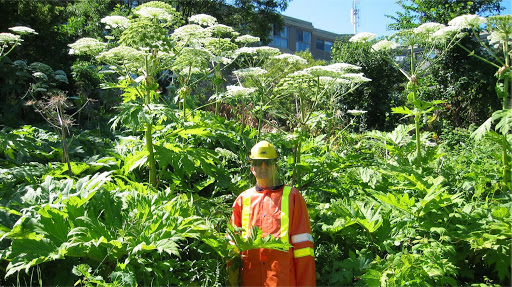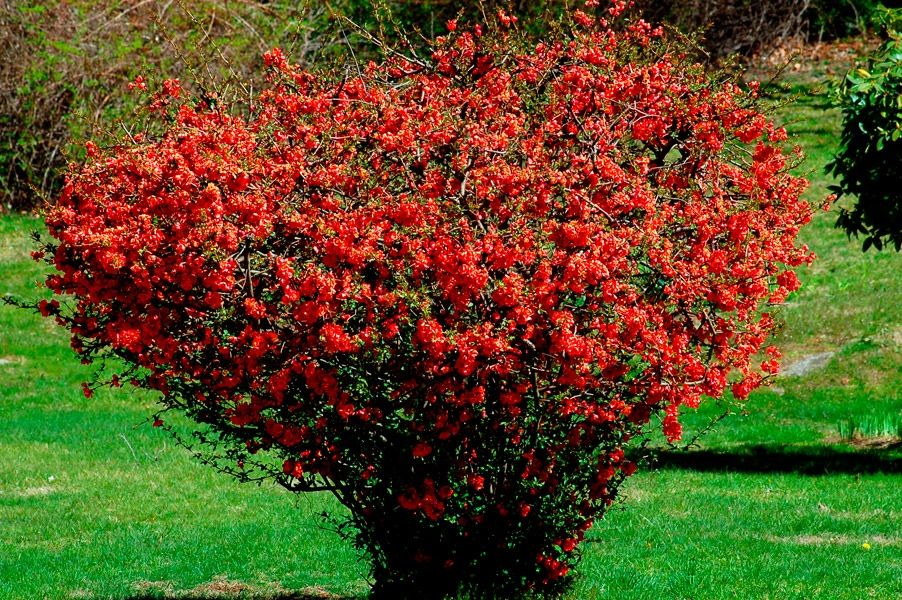Common lumbago (P. vulgaris) a specimen for the whole genus or scientifically type species was described by Karl Linnaeus. It was separated into a separate genus after. By the way, modern DNA research methods show, that we did it in vain, so when the combination occurs, eg, Anemone, it can be considered obsolete, and quite modern.
Lumbago description
Common lumbago is well known to those, who buys seeds in the store https://cib.net.ua/. Color shapes are usually offered (white, pink of different shades, crimson, almost red, purple) and a multicolored mixture of 'Raradepo' with split tepals, so the flower looks double. Dissection is well inherited, but the color may not be the same, what was expected.
There are named varieties, but it is better to acquire them alive:
- ‘Red Bell’ (‘Red Bells’) wine red,
- 'Rubra reddish purple,
- 'Barton's Pink' pink,
- ‘Alba’ by itself white and others, only about a dozen.
In nature, this type of flower lumbago is more difficult for our citizens to meet - the only population is at Lake Ladoga, and the main area in foreign Europe. Typical signs of lumbago common powerful bush, early blooming, which are ahead of the leaves, large flowers stick out or droop slightly, and the leaves are openwork, twice or thrice pinnately-spaced with narrow lobules. But don't be happy, that we sorted it out so easily. Other lumbago has similar signs., and countless their numbers. Thanks to taxonomists.
Question, what is considered a species, controversial and, apparently, will never be decided. As they say in academia:
“A good taxonomist decides for himself, what is considered a species ",
but after all, everyone considers himself to be good ... So he expresses his opinion, fixing it with a scientific article. Everything would be nothing, but there are taxonomy splitters, they try to give a name to each counter form and breed names, which then do not fit anywhere. Through their efforts, the common lumbago formed a whole retinue of close relatives, that, in fact, may just be geographic races.
They are of practical interest for collectors and lovers of collecting seeds in nature., because you can get them only as a result of a targeted search. They differ in the degree of dissected leaf, the size of the flower and the color of pubescence: then it is yellowish, then whitish. These are European lumbago large (P. grandis), Gallery, Crimean, Polish, Ukrainian, Donetsk, and in Siberia and the Far East it is massively found in the steppe.
The second popular flower lumbago opened, sleep-grass (P. patens). It can be found even in the light pine forests of the trampled Moscow region., but the most rampant is observed in the steppe zone along dry slopes and sandy pine forests.
If we understand this species in a broad sense, then its range. And it stretches from the center of Europe to the prairies of North America and is inhabited by many forms. The typical form of sleep-grass was described from Tobolsk, has a raised or slightly drooping flower in purple tones and tripartite leaves with dissected lobes, some call them "finger-dissected". It is found throughout Europe and in Western Siberia., and those, who gives it the status of a species, call such a broad-leaved lumbago.
When moving east, starting from the southern Volga region, among the ordinary ones, sleep-grass plants with more dissected leaves begin to appear, the width of the lobules of which decreases, in Western Siberia they are quite common, and behind the Yenisei, all the flowers of the lumbago are already dressed in thinly dissected leaves and are called the multipartite lumbago. But not everyone agrees with this., because there are many intermediate forms, who don't know where to go.
What's even more interesting, in the flora of China, in addition to the multipartite, there is ... again the broad-leaved form P. patens. And there are backaches with strongly dissected leaves on the other side of the range: in Poland is described. Flowed, which is also celebrated in the Pskov region. But let's go further into the jungle of systematics. Along the way, t. it is. when moving east, you can see another pattern - the appearance of yellow flowers.
Plants with yellow flowers and thinly dissected leaves are called yellowing backache., maybe, and angustifolia (P. angustifolia) here the taxonomists themselves are already confused. But where to put those, what about wide leaves? And they are not uncommon.. Let's, let's call them backache Ural. But also in Western Siberia, and especially often in the Volga region and in the Southern Urals there are glades, where there are not only purple and yellow, but also purple, white, pink, all intermediate shades and even bicolor perianths, accompanied by all sorts of leaf shapes.
There are hypotheses, who try to explain such a picture. Once upon a time, between ice ages, Siberian yellow backache of the narrow-leaved type has spread to the Baltic, mingled with European lumbago open, and all the observed ugliness is the result of this meeting. And there, where populations are mottled, hybrids for some reason began to split. But how to explain, that in America purple lumbago with thinly dissected leaves? Yes, just call them something else.. However, Americans still tend to believe, that they have the most common open chamber, but compatriots found Nuttall’s backache in our Far East.
Actually Albanian in the narrow sense has light yellow flowers. The flower lumbago bellflower fits well into this company, living in Altai and in the mountains of Central Asia. Flora prescribes narrow purple bells for him., however, samples from the Tien Shan have faded greenish-grayish flowers, tinted purple. Gardeners, under the name "lumbago bellflower", exhibit photos of plants with wide purple flowers., here and understand, what is it and how does it differ from the shooting of a dubious one from the same places.
A question is brewing: Is anyone growing this?? Surprisingly yes. Growing all of the above and more, but often impossible to figure out, What exactly.
Rare and peculiar species
Their portraits on slides and in pots can be found on the sites of lovers of alpine plants.. Seems, no such shots, which they could not tame. It is not surprising to see a pretty spring backache in the culture., who lives in Western Europe, with a characteristic winter green leaf and protruding flowers. They are white on the inside., outside may be yellowish, pinkish, lilac. But even some unattractive narrow endems from the inhabitants of Eastern Siberia fall into their hands., Far East, China:
- finely lobed,
- Tiny Altai Pasque Bunge,
- light yellow lumbago Sukachev from the vicinity of Lake Baikal,
- purple with trifoliate leaves, each cut into his Ladayanian,
- Tatewaki and Chinese (P. chinensis).
Pulsatilla whole-leaved, another name for miyakiya, lives in remote places of Sakhalin. But this is not an obstacle for foreign gardeners.. On the sites of the Alpine societies, you can see blooming miyakia in pots.. As they write (Sweden), blooms from fresh seeds usually in the second year and then two blooms: early spring and summer. The hardest thing to keep the plant, which is very unstable and short-lived. Nitrogen overfeeding or soiling causes immediate death.
The right climate is essential for success (raw and cold) and soil conditions of habitats (gravelly soil, poor in organic matter). Well, raw, there are enough cold and gravelly places in Russia, so it's up to you to sow and grow. Yes, what to be surprised, they even grow backache Kostychev, unattainable for us in the post-Soviet Pamir-Alai, a beautiful plant with a pure pink protruding flower and purple anthers.
Growing
Backache can't stand dampness, wetting is a common cause of their death in winter. Keeping these plants on sunny slides or in pots with light soil, mixed with coarse sand and well permeable to water, not a whim, but a good deed. flower beds, yes, well drained, can arrange only regular and open backache.
Ukrainians speak, that all flowers have a mother, and sleep-grass has an evil stepmother, which drives the poor lumbago flower out of the ground before others. They sing about their mother, who will come from the field and bring three flowers: sleepy and happy.
But they can also have a mass death of young animals after the first winter., especially on heavy soils. This happens as a result of bulging and drying of the roots.. therefore, arriving at the dacha in early spring, first of all, check the crops of lumbago. Having a long tap root, they don't like transplants, so if you transplant, then at a young age, when damage is minimal.
What is important for variety owners, in addition to seed reproduction, division is possible. After seed maturation, in July, root cut into cuttings, so that each has a kidney, and rooted in a greenhouse with root. Generally, choosing a suitable place for the shot, you can admire for years, how does he get fat, growing a bush and releasing dozens of peduncles, but ... But there are for lovers of these plants and a fly in the ointment species are complex for germination, as well as for growing. Rarely keep them, but those, who succeeds, can be justifiably proud of the results. They are from a special subgenus, and stem leaves, which in others form a fused "collar" under the flower, they are separate and look like basal, which reminds of a close relationship with anemones. Basal leaves trifoliate, with complex dissected lobes on long petioles.
Alpine backache (P. alpina) from the highlands of Europe is divided into a number of subspecies, of which only one lemon yellow is successfully grown.. This is a large plant., fruitful 60 see and more. In the polar botanical garden (Kirovsk) looks great and bears fruit. The ease of cultivation is also indicated by the AGM award., which is given to plants not only for beauty, but also for good behavior in the garden.
His relative from the alpine meadows of western Transcaucasia. golden or yellow gardeners torture for a long time and stubbornly. Seeds can germinate, but the further fate of the seedlings (Moscow region) unenviable: languish or drag out a dull existence, showing no signs of pleasure in the form of flowers. Very difficult American backache western.
Wide open white cross flower, staring at the zenith, and a fluffy bunch of seeds give it a special resemblance to anemone. But p. Tarao, who was thrown into the Kuriles, often grown in Japan (in pots) and very fond of. Its flower with 8-12 white “petals” seems to be sticking out of the ground, so the peduncle is short at the beginning of flowering.
How to grow this plant, see the video “lumbago ordinary landing”
Hybrid shots
Of course, forms are easily crossed or, if you want to, types of kinship of flowers of the lumbago open, mixing in the offspring the color of the flower and the width of the leaf lobes. So if you want to keep, eg, cross flower yellowing in its pristine purity, then isolate it from the usual purple. But there are interspecific hybrids, given their own names.
for example, a natural hybrid of spring and open happens there, where their ranges overlap, its name P. х intermediate т. it is. backache intermediate, flowers are variously colored and are accompanied by leaves of the same, then the other parent. famous european hybrid p. Wolfgang, although it can also be interpreted as a kind of disclosed. Kiss lumbago marked in the Far East. crossed, but already in the garden, miyakyu with spring shot, having received neither this nor that plant with a lilac flower and a dissected leaf. Output: if the source of the seeds you received is a collection of lumbago, it is worth taking a close look at, what will grow out of them.






